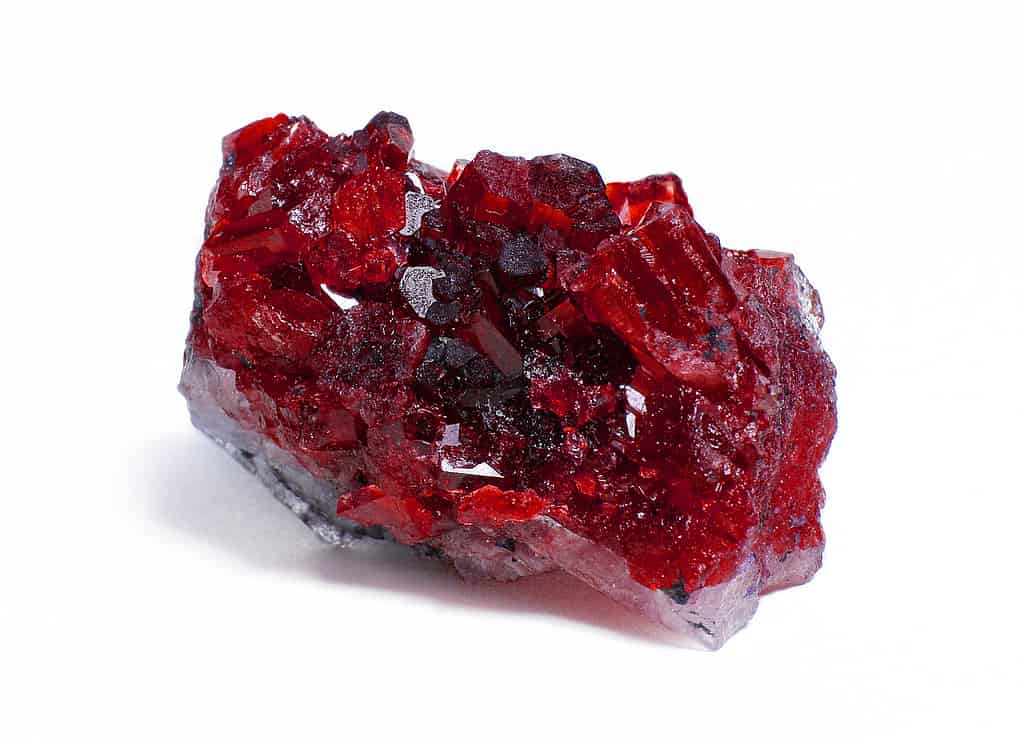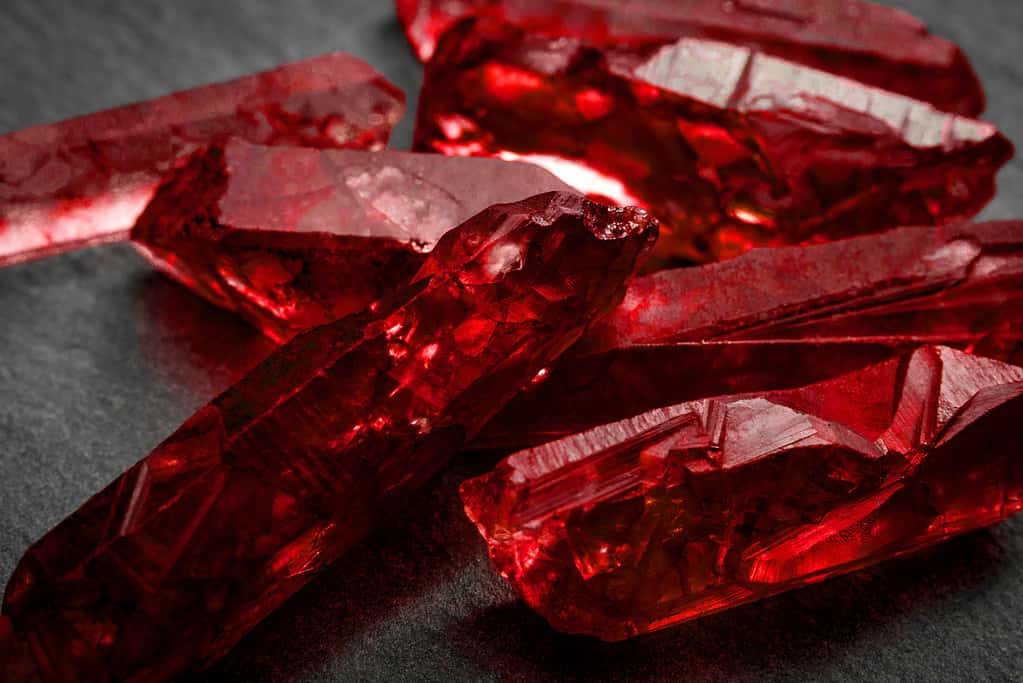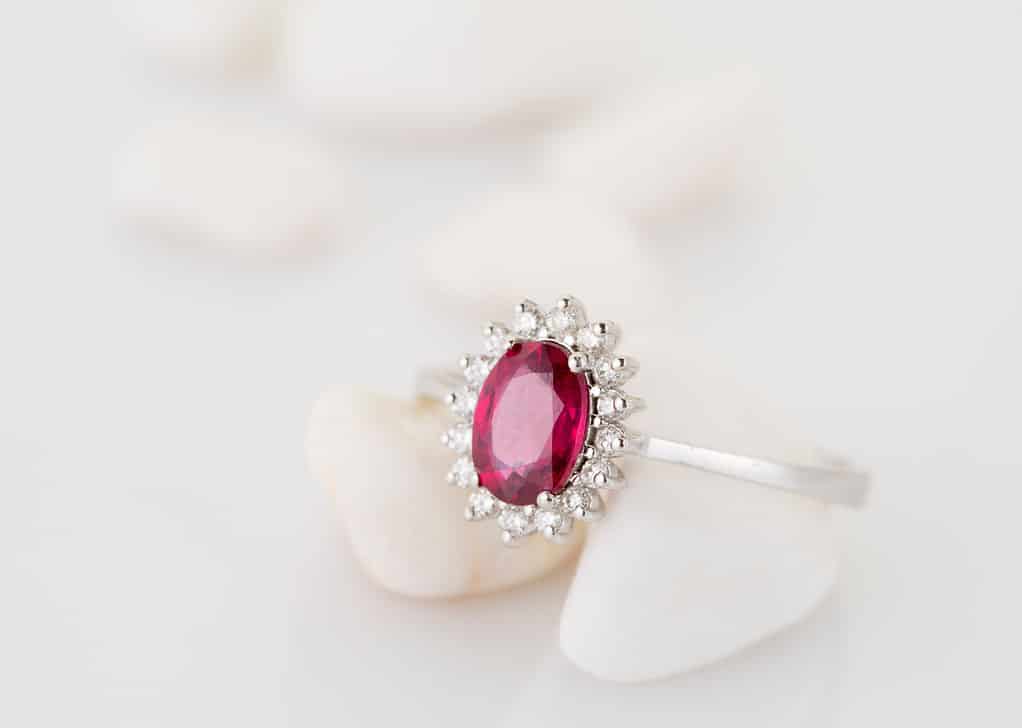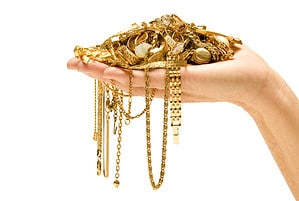Rubies are a well-known stone in modern society. They rank right up there in popularity with diamonds, sapphires, and emeralds. The right cut and color of ruby is worth a pretty penny. However, for some religions throughout history, a ruby’s symbolism is what gave them the most importance.
Now, the stones are valuable because of their durability, brilliant colors, and rarity. However, that wasn’t always the case. Many people believed that rubies were powerful. Due to their color and the way they reflected and refracted light, people all over the globe believed that the stone held fire or powerful spirits inside.
Sounds interesting, doesn’t it? If you want to learn more about these unique stones and the symbolism they have around the world, you’ll want to continue reading.
The History of Ruby

Rubies are tough and not easy to break which is why it was thought they could protect the user.
©photo-world/iStock via Getty Images
Rubies get their name from the Latin word, rubber. This is simply a word that means “red.” For a long time, people thought that rubies held inner fire. This is likely due to their color and the way the light changes as you move the stone around.
Older Myths About Rubies
Because of the connection to fire and warmth, many people believed that placing a ruby in water brought it to a boil. It was even said that wrapping up a ruby did no good because it would shine through any layer and reveal itself. Some people believed that rubies had their own light source and at night would shine like a torch.
Genders and Colors of Rubies
For a while, rubies were gendered. The darker rubies were considered male, while the bright red stones were often considered more feminine.
Rubies, unlike some other stones, are always red. They come in various shades of red, including ones that are almost orange in appearance to dark reds that will remind you of wine. However, to be a ruby, the main color is always red.
Technically, rubies are the same as sapphires. The only difference is the color. So any color outside of red is generally classified as a sapphire instead of a ruby.
For example, there are pink sapphires. While sapphires are commonly associated with the color blue, they can be pretty much any color but red. Rubies, on the other hand, always have to be red. To put it in simpler terms, all rubies are sapphires, but not all sapphires are rubies.
Both stones come from a mineral known as corundum. The percentage of corundum and the pigments in the mineral are what make the difference between sapphires and rubies.
The most expensive shade of rubies is a color often called “pigeon’s blood red.” It’s also sometimes simply called “vivid red” to move away from the grotesque name.
Lore Surrounding Rubies

In the right light, rubies appear to have a fire hidden inside of them, which is the reason for most of the lore surrounding the stone.
©Moussa81/iStock via Getty Images
Modern Religions
Rubies are mentioned in the Bible four different times. This jewel was used on breastplates, and the stone’s value and connection to wisdom were both brought up. Ruby is one of the 12 sacred stones created by God and is considered the most precious.
In Hinduism, people offered rubies to Krishna to be given the chance to be reborn as an emperor. There were four classifications of rubies. The most powerful rubies supposedly offered complete safety to whoever wore them.
Myanmar
Myanmar, once known as Burma, has been a source of rubies going back to at least 600 AD. Because of this, they have close ties with the red stone. Warriors most often used the stone to help them avoid blows in battle. They didn’t just wear the stones, though. The most devoted had them placed into their flesh so that they became a part of their bodies.
Other Lore Surrounding Rubies
In India, rubies reportedly helped people to live in peace with the people they considered their enemies. In European countries, people coveted rubies as a symbol of wealth. The stones supposedly offered health, wisdom, and love to those who wore them.
In the past, people believed that rubies held the spirits of powerful beings. Part of this lore came from the fact that ancient civilizations often carved images into the stone, like dragons and other mythological creatures.
When slightly newer civilizations, like those from the 13th century, came across these carvings, they thought that something supernatural made the shape and not other humans.
Rubies might not only be found on earth, either. Other planets and moons may produce rubies like our planet does. This means that stories of rubies and sapphires coming from the heavens might be true.
What Ruby Symbolizes
Because of its bright red color, ruby is often associated with the most intense and firey of emotions. Love, anger, passion, and fury are common emotions associated with the stunning red gemstone.
This red stone is also often associated with life and blood. Because of this, many cultures assumed that rubies had powers associated with life and death.
If you know the symbolism behind garnet, you may realize that the symbolism between these two stones is pretty similar. This is because, for a long time, it was almost impossible to differentiate stones of similar color and appearance.
Until science came in and allowed people to identify the materials that are in each stone, most stones were simply classified by color. Since garnets and rubies are so similar in appearance, they were considered the same stone for a long time.
Uses of Ruby

Rubies are beautiful in jewelry such as rings and earrings and can handle scratches and bumps without breaking or showing signs of damage.
©feedbackstudio/Shutterstock.com
There are two main ways to use rubies. They are beneficial for both health and wealth.
Wealth
Rubies bring success. By wearing or dreaming of rubies, you are sure to have success in your business. This could be in traditional work, or something like farming, art, or freelancing.
Rubies also have a positive cycle of ownership. If you own a ruby, you increase your wealth. However, to buy a ruby, you also already need to have wealth already (or get incredibly lucky), so it’s hard to verify the accuracy of this statement.
Rubies are also said to help with protection from enemies of all shapes and sizes. So by owning a ruby, you help to protect the wealth you already have from enemies and disasters. It’s even said that the stone would help protect their property against natural disasters like storms and tsunamis.
However, to receive this benefit, you have to wear the stone on the side of your body where your heart is, which is the left side. Wearing it on the right side doesn’t offer as many benefits.
Health
If you do get sick or feel unwell, rubies may be here to help. When focusing on crystal healing, rubies help with body pain, low energy, heart problems, and blood circulation. If you rub the stone on your skin, it is meant to improve wellness, vitality, and youth.
Rubies work well as jewelry. They have a hardness rating of about 9. This means that basically, only diamonds can scratch them. They’re also fairly tough and can handle drops and bumps without shattering. They come second in durability only to diamonds.
Because of their red fluorescence and sharpness, rubies are used in medical instruments like knives and lasers as well. So even to this day, rubies are saving and healing people.
Ruby as a Birthstone
Ruby is the birthstone for those born in July. Those with ruby as a birthstone are said to receive luck and protection. Their personalities are often described as fiery and passionate.
In addition to being a birthstone for those born in July, it serves as a wedding anniversary theme. Rubies are traditional stones for the 40th wedding anniversaries.
While rubies may be seen as a more feminine stone, that’s not necessarily the case. They work well as stud earrings and as a hint of color on watches.
Thank you for reading! Have some feedback for us? Contact the AZ Animals editorial team.








